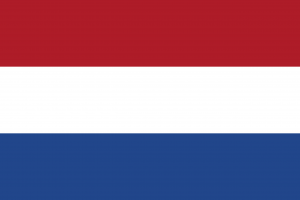Language/Dutch/Grammar/Order-of-Adjectives-and-Adverbs
 Հայերէն
Հայերէն Български език
Български език 官话
官话 官話
官話 Hrvatski jezik
Hrvatski jezik Český jazyk
Český jazyk English
English Suomen kieli
Suomen kieli Français
Français Deutsch
Deutsch עברית
עברית हिन्दी
हिन्दी Magyar
Magyar Bahasa Indonesia
Bahasa Indonesia فارسی
فارسی Italiano
Italiano 日本語
日本語 Қазақ тілі
Қазақ тілі 한국어
한국어 Lietuvių kalba
Lietuvių kalba Νέα Ελληνικά
Νέα Ελληνικά Şimali Azərbaycanlılar
Şimali Azərbaycanlılar Język polski
Język polski Português
Português Limba Română
Limba Română Русский язык
Русский язык Српски
Српски Español
Español العربية القياسية
العربية القياسية Svenska
Svenska Wikang Tagalog
Wikang Tagalog தமிழ்
தமிழ் ภาษาไทย
ภาษาไทย Türkçe
Türkçe Українська мова
Українська мова Urdu
Urdu Tiếng Việt
Tiếng Việt
| ◀️ Comparison of Adjectives and Adverbs — Previous Lesson | Next Lesson — Prepositions of Place and Time ▶️ |
As a Dutch language teacher with over 20 years of experience, I am excited to introduce you to the topic of Dutch adjectives and adverbs. In this lesson, we will cover the order of adjectives and adverbs in Dutch language. This lesson is part of the “Complete 0 to A1 Dutch Course” for complete beginners.
Consider exploring these related pages after completing this lesson: Vowels and Consonants & How to use “to speak” in Dutch.
Order of Dutch Adjectives
In Dutch language, the order of adjectives before a noun is quite strict. The order of the adjectives is as follows:
1. Quantity or number 2. Opinion or judgement 3. Size 4. Age 5. Shape 6. Color 7. Origin 8. Material 9. Purpose
For example, if we want to describe a car in Dutch, following this order we would say:
| Dutch | Pronunciation | English |
|---|---|---|
| een | en | a/an |
| mooie | /mo-'we/ | beautiful |
| oude | /'au.de/ | old |
| kleine | /'klAIn@/ | small/narrow |
| groene | /'xru:.n@/ | green |
| Engelse | /'E.n.gh@.s@/ | English |
| sportwagen | /'spOrt.wA.x@.n/ | sports car |
Notice that the adjectives are placed before the noun and in the specified order. If we don’t follow this order, our Dutch sentence may sound strange.
Here are a few more examples:
- een zeldzame rode diamant (a rare red diamond)
- drie grote ovale tafels (three large oval tables)
- een lange smalle straat (a long narrow street)
As you can see, when using multiple adjectives in Dutch language, the order matters!
Order of Dutch Adverbs
When using multiple adverbs in Dutch language, the order doesn’t follow a strict rule like adjectives. However, it is recommended to follow this order to make the sentence sound more natural:
1. Manner (usually ends in -ly): hoe? (how?) 2. Location or place: waar? (where?) 3. Time: wanneer? (when?) 4. Purpose or reason: waarom? (why?)
For example:
- Hij kookt snel thuis lekker eten. (He quickly cooks delicious food at home.)
- Ik ga vanavond laat met mijn vrienden naar het restaurant. (I am going to the restaurant late tonight with my friends.)
In Dutch language, the adverb usually comes after the verb, unless it is modifying the verb, in which case it would be placed in front of the verb.
Practice Exercise
Now that you’ve learned the rules, let’s practice using them! Rearrange the following words to form a grammatically correct sentence in Dutch language.
1. op staat de muziek harde discotheek 2. in een mooi woon ik klein huis 3. witte ik draag altijd sokken
Answers:
1. De muziek staat hard op in de discotheek. (The music is loud in the discotheque.) 2. Ik woon in een mooi klein huis. (I live in a beautiful small house.) 3. Ik draag altijd witte sokken. (I always wear white socks.)
Congratulations! You’ve now learned the word order of Dutch adjectives and adverbs.
Sources
- Dutch grammar - Wikipedia
- The Basics of Dutch Sentence Structure & Word Order
- Essential Dutch Grammar: All the Grammar Really Needed for ...
Other Lessons
- Possessive Case in Dutch
- Ordinal Numbers in Dutch
- The Dative Case in Dutch
- Present Tense and Regular Verbs
- Nouns
- Irregular Verbs
- Greetings in Dutch
- How to Use Have
- Comparison of Adjectives and Adverbs
- Definite Articles in Dutch
| ◀️ Comparison of Adjectives and Adverbs — Previous Lesson | Next Lesson — Prepositions of Place and Time ▶️ |

